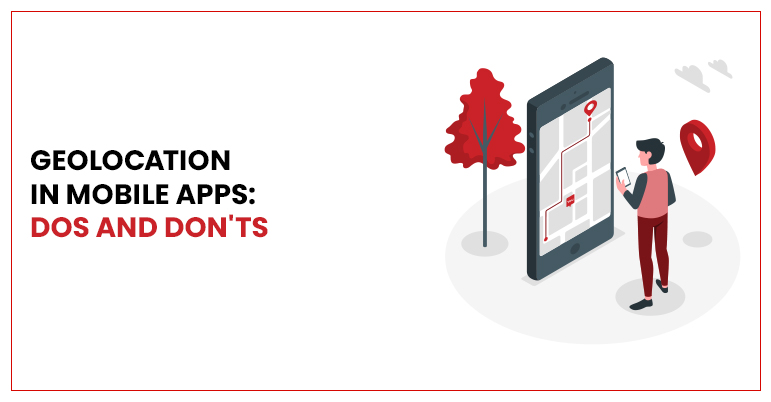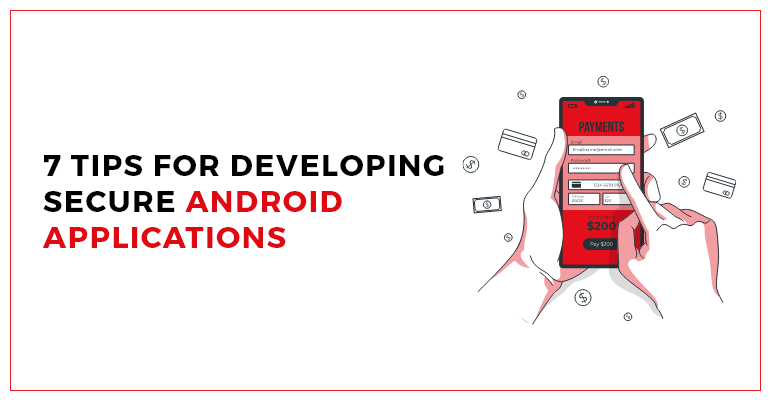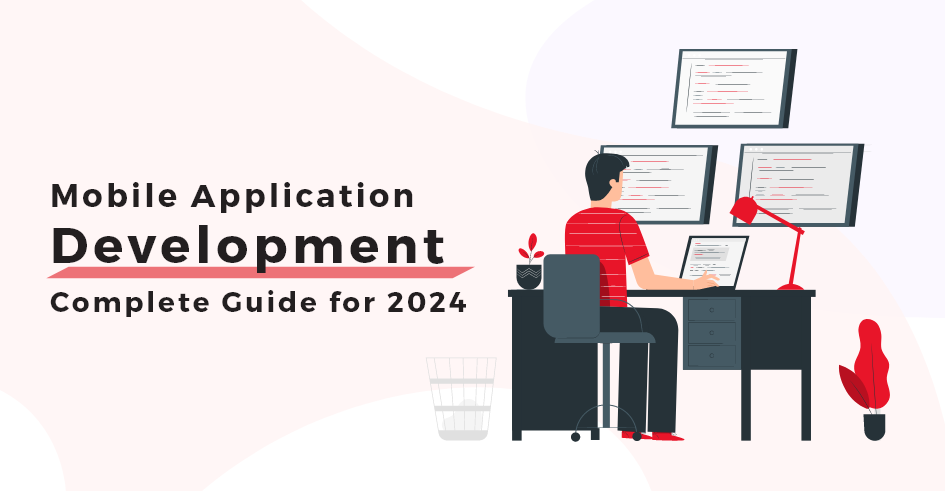Geolocation in Mobile Apps: Dos and Don’ts
August 4, 2021
admin
Consider the applications you’ve recently used: maybe you utilized one of the online food delivery services, or you hailed an Uber vehicle, or you tracked your daily run with Adidas Runtastic, or you used a dating app. The possibilities are boundless for apps that have made our lives easier by incorporating geolocation into their design. Huge corporations and start-ups, and small enterprises understand the potential of this adaptable technology to create a compelling value proposition.
There are various geolocation services accessible, such as GPS, Beacons, and others, but integrating them into your mobile app is not easy. When developing a mobile app using geolocation, your team of developers must avoid several hazards. Let’s go right to work on them.
WHAT TO LOOK OUT FOR WHEN DEVELOPING A GEOLOCATION APP
These are the most critical considerations to make while creating a geolocation-enabled mobile app.
- Select the appropriate technology stack.
- Ensure the security of your data
- Avoid using up a lot of battery life.
SELECT THE MOST APPROPRIATE TECHNOLOGY STACK
Selecting a geolocation technology to support your app concept is a critical step in assuring the app’s overall efficiency. The platform (iOS, Android, Web) and your business objectives are two aspects that should affect your decision (will it require an outdoor technology or an indoor one). Geolocation technology for the outdoors
- The Global Positioning System (GPS) is a network of 30 operational satellites that continuously circulate the Earth’s orbit. Nowadays, every smartphone includes GPS technology, which is the most prevalent method for determining a device’s location outdoors. Its precision is down to 49 feet, and it operates in any location without the need for an internet connection.
- If GPS is unavailable for whatever reason, use Cell ID as a fallback alternative (such as being switched off). The nearest cell tower is used to locate the device. It’s not as precise as GPS, and it’s more useful in cities than in rural areas.
- Wi-Fi positioning: It has a precision of 25 meters and consumes the battery much more slowly, but the major disadvantage is that it requires your smartphone to be Wi-Fi enabled at the time of use.
GEOLOCATION TECHNOLOGY FOR INSIDE
If the user is inside and you need to provide them advertisements or direct them to what interests them, accuracy inside 49 feet is worthless; this is especially crucial in in-store apps. Indoor positioning apps are available for more precise positioning within a structure. Geolocation data can also be used to gain a better understanding of a customer’s lifestyle and habits. Marketers must, however, exercise caution when developing promotions based on these assumptions, lest they appear intrusive and insensitive. Urban Outfitters’ campaign, which targeted push notifications marketing party gowns to young female clients who had previously visited a nightclub or bar, is a good example.
Brands can hire AI experts to design a smart decision-making system to streamline the processing of large data volumes and increase the accuracy and granularity of the analysis. With enough data, you can begin segmenting your clients based on their standard features and determining the requirements and goals of each group. This can aid in the creation of promotional materials for location-based marketing initiatives that will compel their target audience.
- Apple’s iBeacon and Google’s Eddystone: iBeacon is an Apple service, while Eddystone is a Google service. For indoor location fixing, they both employ BLE (Bluetooth Low Energy). They give IDs that will trigger specific actions in various mobile apps. Customers with the Shopkick app, for example, get alerted when they walk into Macy’s, a well-known US department store. They are then alerted to special offers and things that they might be interested in.
- Geofencing: This approach uses a combination of GPS, cellular, and Wi-Fi data to keep track of where you are. When a gadget enters, it generates a virtual border that triggers pre-programmed behaviors. A trigger can be activated in three different ways: Static based on a device’s position about a specific location. Dynamic refers to when a device’s location is determined by emotional changes, while peer-to-peer relates to users’ position about other users. When you walk out the door, Amazon’s Alexa app shuts off the lights, an example of geofencing in action.
Checking federal and state regulations and following the recommendations is the first step toward a problem-free future in mobile application development. You’ll need to manage this “heavy data” with a technical solution that provides data security and encryption. Using an integrated, master location database as the sole source for handling location data during geolocation app development is the best practice. The respondents (adults in the United States) believe they do not have sufficient control over their data. Don’t overload users with many consent tabs right after they download to make them feel at ease. If the information is only required when users access a location-based function, ask each time. This boosts their trust in the organization as a whole.
Don’t log or store GPS data unless it’s necessary. The information can be used without being saved. For real-time use, GPS positional data is frequently stored. Only a few programs use GPS on their own. The Camera, for example, regularly geo-labels photographs. Attempt to remove the EXIF data from the image.
HERE’S HOW TO SECURE A GPS APP:
- Use multi-factor authentication to make it more difficult for hackers to gain access to your account.
- Always use an SSL certificate, Network Security Configuration (Android), or App Transport Security to encrypt conversations for iOS mobile app development.
- If you must save sensitive data on user devices, encrypt it with AES-256 or RSA techniques.
Real-time client engagement techniques rely heavily on geolocation data. Marketers can pinpoint when a promotional offer is most relevant to an app used by tracking their movements. You need to know who your clients are to create the framework for one-to-one location-based marketing. Companies now have access to various mobile analytics solutions that can be linked to a brand app to collect user demographics and engagement information. Use customer insights from other touchpoints to make customer profiles more sophisticated.
AVOID USING UP A LOT OF BATTERY LIFE.
The energy required to power the screen should, in theory, have the most significant impact on the user’s battery life. Users may begin to question whether they need to maintain your app if it consumes more than 10% of battery life in one hour of use. Setting suitable action thresholds is the best method to avoid this. If your app polls for GPS locations every 60 seconds, the battery will quickly be depleted. Is this a frequency that you require?
Even if GPS accuracy is critical, there are workarounds available. When asking for GPS location, for example, if it hasn’t changed in several minutes, your program can reduce polling frequency immediately. If the user is in a car and the location is changing rapidly, you can assess the reported speed and decide on the polling frequency. Finally, you may conduct automated tests to track how much energy your users’ devices use when they are in use. Device-specific computerized tests are also possible. If you see that your energy consumption is high, you may need to alter the action thresholds further.
ENDNOTE
Finally, geolocation-based apps provide a fantastic chance for businesses to provide excellent service to their clients. When it comes to mobile app development, if you have a good app idea and an experienced team of developers, you don’t have anything to worry about. If you need assistance with your geolocation app, please contact our team of specialists; we would be happy to assist you.





